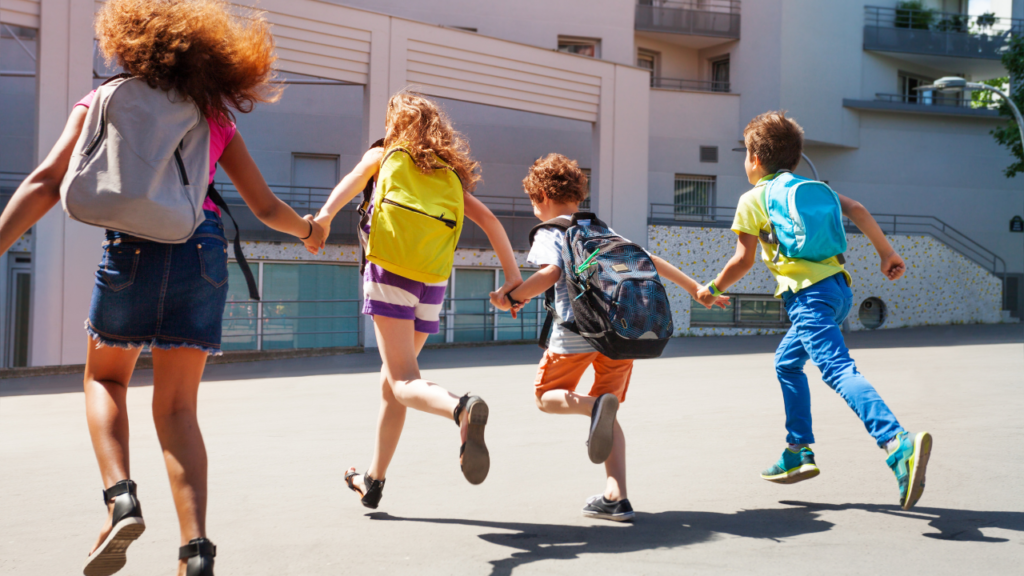Sharing is caring!
5 Tips for Fitting Your Child’s Backpack for Back to School
Back to school means it’s time to select your child’s next backpack. While my son will be dreaming of Spider-Man and “bad guy” themes for his backpack, I’ll be considering the straps, padding, and fit. Try these tips to prevent shoulder and back strain to help your child safely carry their supplies. Here are 5 tips for fitting your child’s backpack for back to school.
Use the hip belt
I probably never used the hip belt growing up and often I would only use one shoulder strap. My dad used to joke that I started leaning to one side as a result. While we think our shoulders and back are supposed to carry the weight, our legs have the strongest muscles and should help carry the load. In order to do that your child needs to use the hip belt (if your backpack comes with one) to transfer more of the weight from the shoulders to the hips. The belt should fit snug but feel comfortable at the top of your child’s hips.
Adjust the shoulder straps
Shoulder straps should be wide to help distribute weight and padded for comfort. Adjust the backpack to about 2 inches below the shoulders, fitted close to the body with the bottom of the backpack at hip level. If you can’t achieve this position the backpack may be too large for your child. Child-specific backpacks will be shorter and narrower for a better fit. Your child should always use both straps to distribute the weight and help them maintain good posture.

Connect the chest strap
The chest strap helps keep the shoulder straps in place to give better stability. It should be about an inch below the collarbone and loose enough that both arms can move easily.
Load the backpack correctly
The American Academy of Pediatrics recommends backpacks shouldn’t be more than 10% of your child’s weight. Carrying heavier backpacks can cause neck and back pain and affect posture. When loading the backpack, place heavier items like books toward the back. This helps more weight to be carried through the hips and improves posture to prevent your child from leaning forward to carry the weight. Lighter items can be placed in front. The back should also be padded to prevent books or other items from injuring your child.
Consider alternative backpacks
If your child’s backpack is too heavy, consider using a backpack with wheels.
For children that use wheelchairs, consider a specialized backpack to hang on the back. Target sells a line of Adaptive Kids Backpacks that have extra straps to hang on the back of the wheelchair, easy grab zippers as well as multiple pockets, and openings for tubes.
For kids that enjoy different sensory input, you can try the RelaxPack Backpack which includes fidget strips for kids that enjoy feeling different textures, and D-rings for chewies for kids that like to put items in their mouth.
Whether your child is dreaming of a “bad guys” theme like my son or another fun character, make sure the backpack is properly adjusted. Considering appropriate fit and design will help your child use their backpack without injury.
Whitney Alaniz, MOT OTR/L
Whitney Alaniz, MOT OTR/L is an occupational therapist turned (mostly) stay-at-home mom. She has worked with adults to young toddlers and has a special interest in early childhood development targeting fine motor skills, feeding, sensory processing, and coordination. She loves incorporating this knowledge with her own two little boys through play. When she’s not running after her little ones she enjoys traveling, cooking new recipes and eating chocolate from her secret stash.






